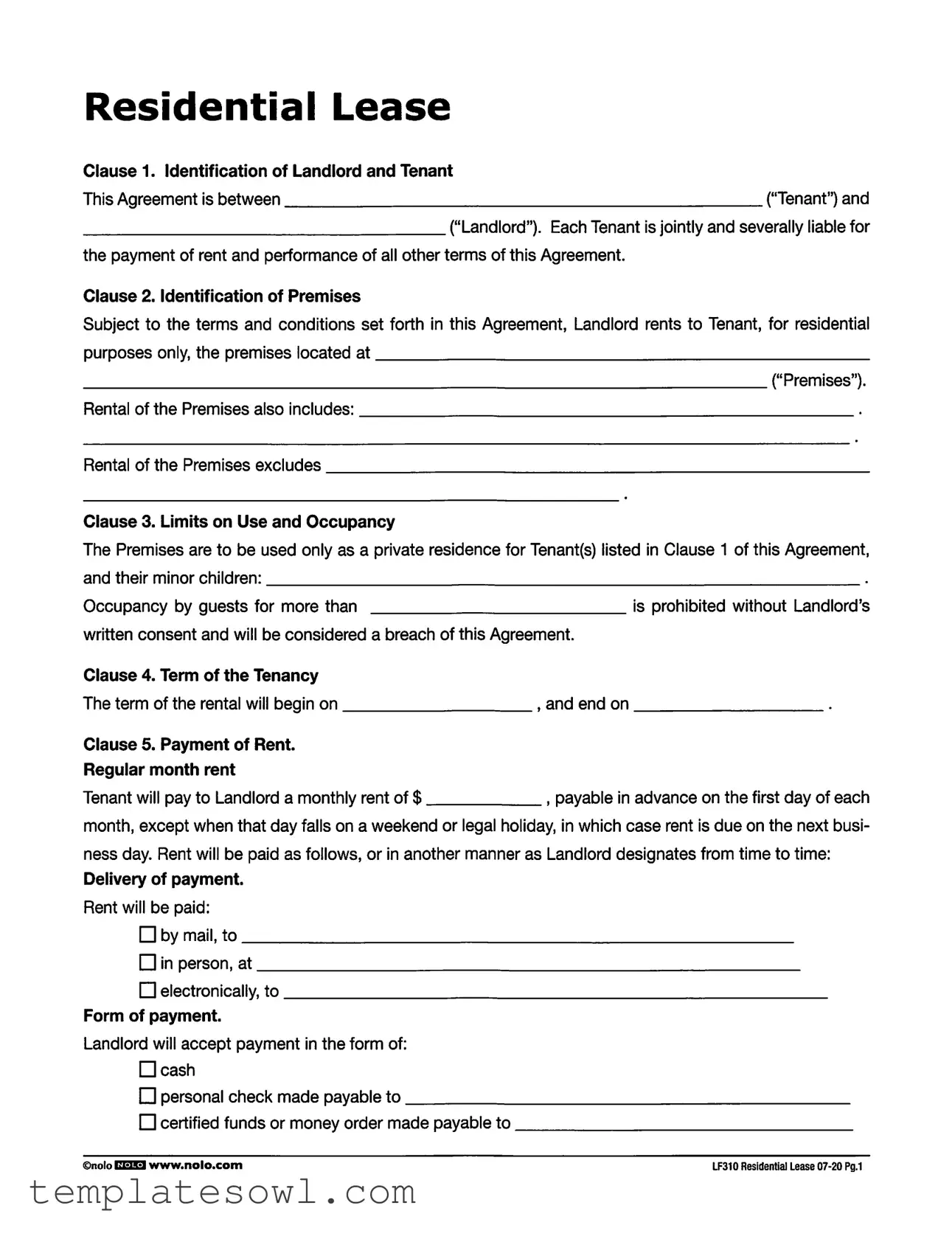What are the responsibilities of the Tenant under the LF310 Residential Lease form?
The Tenant is responsible for paying rent on time, maintaining the premises, and adhering to all terms outlined in the lease. This includes using the property solely as a private residence and ensuring that any changes, such as adding new occupants, receive written approval from the Landlord. Moreover, failure to comply with these terms can result in penalties or termination of the lease.
How is rent payment structured in the LF310 Residential Lease form?
Rent payment is due monthly and must be paid in advance on the first day of each month. If the payment date falls on a weekend or legal holiday, the rent is due on the next business day. The form also indicates how the Tenant can pay, which may include options like cash, personal checks, or electronic transfers. Additionally, upon signing the lease, the Tenant must pay a prorated amount for the first month, as specified in the agreement.
What happens if the Tenant pays rent late?
If the Tenant fails to pay the rent within a specified number of days after the due date, a late charge will be assessed. This late charge consists of a fixed amount plus an additional fee for each day the rent remains unpaid. However, the total late charge for any month cannot exceed a certain limit, and the Landlord retains the right to demand full rent payment on time regardless of any late charges imposed.
What is the policy on security deposits outlined in the LF310 Residential Lease form?
Upon signing the lease, the Tenant must pay a security deposit, which is held by the Landlord. This deposit cannot be used for the last month's rent without prior written consent. After the Tenant vacates the premises, the Landlord must return the security deposit within a specified timeframe, provided all keys are returned and a forwarding address is provided. If any portion of the deposit is withheld, the Landlord must give the Tenant an itemized statement detailing the reasons for deductions.










